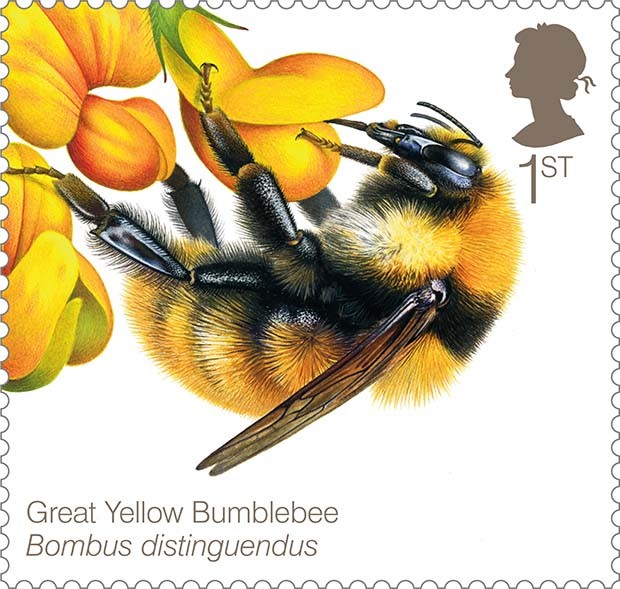Several species of bumblebees have recently experienced range contractions and possible extinctions. While threats to bees are numerous, few analyses have attempted to understand the relative importance of multiple stressors. Such analyses are critical for prioritizing conservation strategies. Here, we describe a landscape analysis of factors predicted to cause bumblebee declines in the USA. We quantified 24 habitat, land-use and pesticide usage variables across 284 sampling locations, assessing which variables predicted pathogen prevalence and range contractions via machine learning model selection techniques. We found that greater usage of the fungicide chlorothalonil was the best predictor of pathogen (Nosema bombi) prevalence in four declining species of bumblebees. Nosema bombi has previously been found in greater prevalence in some declining US bumblebee species compared to stable species. Greater usage of total fungicides was the strongest predictor of range contractions in declining species, with bumblebees in the northern USA experiencing greater likelihood of loss from previously occupied areas. These results extend several recent laboratory and semi-field studies that have found surprising links between fungicide exposure and bee health. Specifically, our data suggest landscape-scale connections between fungicide usage, pathogen prevalence and declines of threatened and endangered bumblebees.
Source:
Scott H. McArt et al. Proceedings of the Royal Society B, Published 15 November 2017.
DOI: 10.1098/rspb.2017.2181
http://rspb.royalsocietypublishing.org/content/284/1867/20172181

- Login om te reageren

Chlorothalonil affects the colony success of native bumblebees
We conducted a controlled cage study to determine the effects of fungicide exposure on colonies of a native bumble bee species (Bombus impatiens). Colonies of B. impatiens were exposed to flowers treated with field-relevant levels of the fungicide chlorothalonil over the course of one month. Colony success was assessed by the number and biomass of larvae, pupae, and adult bumble bees. Bumble bee colonies exposed to fungicide produced fewer workers, lower total bee biomass, and had lighter mother queens than control colonies. Our results suggest that fungicides negatively affect the colony success of a native bumble bee species and that the use of fungicides during bloom has the potential to severely impact the success of native bumble bee populations foraging in agroecosystems.
Source:
Olivia M. Bernauer et al. Insects 2015, 6(2), 478-488; doi:10.3390/insects6020478
http://www.mdpi.com/2075-4450/6/2/478/htm